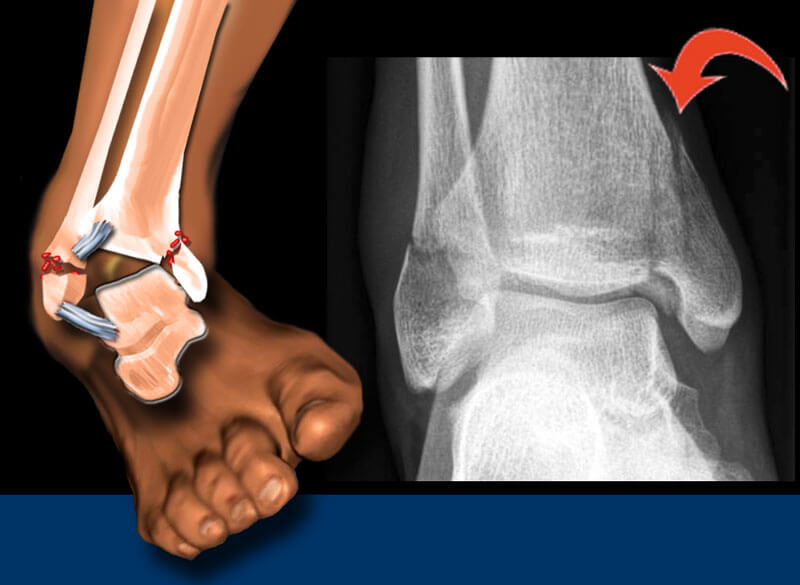Time To Heal Broken Ankle – A Comprehensive Guide!
Healing a broken ankle typically takes between 6-12 weeks but may vary based on individual factors and fracture severity.
In this article, we’ll explore the average healing time for a broken ankle, recovery phases, tips for effective healing, and frequently asked questions about broken ankle recovery.
Understanding a Broken Ankle:

Types of Ankle Fractures and Their Impact on Recovery Time:
Broken ankles come in various forms, with each type affecting recovery differently. The most common types include stable fractures, displaced fractures, and compound fractures. Stable fractures keep the bones aligned and are generally simpler to heal, often taking around six to eight weeks. In contrast, displaced fractures, where the bones are out of alignment, may require surgical intervention, adding to the healing time.
Causes of Broken Ankles:
Ankle fractures can result from a range of scenarios. Simple falls or missteps can lead to a twisted ankle or fracture if the impact is severe. Sports injuries are another major cause, particularly in high-contact or impact sports like basketball or soccer, where players frequently put stress on their ankles. Car accidents and similar high-impact incidents can also lead to broken ankles, especially if the force impacts the lower legs directly.
Typical Recovery Stages for a Broken Ankle:
Stage 1: Immediate Post-Injury Care (1-2 Weeks)
The first two weeks after a break are crucial. In this stage, the focus is on reducing swelling, managing pain, and preventing further injury. Most patients are advised to use the RICE method, which includes rest, ice, compression, and elevation. This approach helps control inflammation and limits discomfort. During this stage, doctors may recommend imaging tests like X-rays to accurately assess the fracture and determine the right treatment path.
Also Read: How Can You Heal A Burnt Tongue – Simple Remedies and Tips!
Stage 2: Bone Healing and Immobilization (4-6 Weeks)
During the next few weeks, the bone starts to knit back together. Immobilization using a cast or boot is essential to keep the ankle in alignment. Check-ups are common at this stage to ensure the bones are healing properly. Some patients might feel the urge to move or put weight on the ankle, but doctors typically advise against it to prevent re-injury.
Stage 3: Rehabilitation and Physical Therapy (6-12 Weeks)
As the bone heals, rehabilitation becomes essential. Physical therapy introduces gentle exercises that gradually increase mobility and strength. Range-of-motion exercises help restore flexibility, while strength training focuses on building muscles around the ankle. This phase is critical for preventing stiffness and ensuring the ankle is ready to bear weight again.
Factors Affecting Time to Heal a Broken Ankle:

Severity of the Fracture:
The nature of the fracture is one of the most significant factors in determining the healing timeline. For instance, a simple fracture without displacement can often heal within six to eight weeks. However, complex fractures that involve multiple breaks or displacement require longer, sometimes up to three or four months, particularly if surgery is involved.
Age and Overall Health:
Younger individuals typically recover faster from fractures due to higher bone density and better healing capacity. Older adults may require more time as bones naturally become more fragile with age. Additionally, underlying health conditions like osteoporosis or diabetes can further slow the healing process, necessitating closer medical supervision.
Adherence to Medical Advice:
Following the doctor’s instructions plays a significant role in the recovery journey. Activities such as prematurely putting weight on the ankle or skipping physical therapy sessions can hinder healing. Conversely, adhering strictly to medical recommendations, including immobilization and scheduled check-ups, can optimize the healing timeline.
Also Read: Do People Get Healed From Stage 4 Colon Cancer – Understanding the Possibilities!
Expected Time to Heal a Broken Ankle:
The phrase “time to heal broken ankle” varies widely depending on factors like the injury’s severity and personal health conditions. Generally, healing times break down as follows:
For minor fractures, the healing process usually takes about six to eight weeks. Moderate fractures might extend recovery to eight to ten weeks. Severe fractures that necessitate surgical intervention can take three to four months or even longer. While these timelines provide a basic framework, each person’s experience may differ.
Tips for a Faster and Safer Recovery:

Healing a broken ankle can be challenging, but several strategies can help streamline the recovery. Following medical instructions diligently is paramount; restrictions on weight-bearing are typically given for a reason, and adhering to them reduces the risk of setbacks. Physical therapy is another crucial component of recovery. Engaging in approved exercises helps strengthen the ankle and regain balance without overstraining the bones.
Diet is also important in supporting bone health. Consuming foods rich in calcium and vitamin D promotes faster healing, while a protein-rich diet aids muscle recovery. Finally, lifestyle choices like avoiding smoking and alcohol contribute to quicker recovery since these substances can slow down bone regeneration.
Dealing with Potential Complications:
Infection Risks:
If the ankle break involves an open wound, infection is a serious concern. Redness, pain, or unusual drainage may signal an infection, and a doctor’s guidance is crucial to address it. Antibiotics are sometimes prescribed as a preventive measure.
Also Read: How To Heal Cracked Corners Of Lips Fast – Proven Remedies!
Joint Stiffness and Loss of Mobility:
Limited movement often leads to joint stiffness, especially if the ankle is immobilized for extended periods. Regular physical therapy sessions and exercises to increase mobility can help mitigate this risk.
Blood Clot Prevention:
In cases where immobility is prolonged, the risk of blood clots increases. Gentle leg movements, as well as blood-thinning medications if prescribed, are effective preventive measures to avoid this complication.
FAQ’s
1. How long should I keep my ankle elevated after a fracture?
Typically, the ankle should be elevated for the first 1-2 weeks to reduce swelling.
2. When can I walk on my broken ankle?
Depending on the severity, you may begin partial weight-bearing after 4-6 weeks, with full weight-bearing advised around 8-12 weeks post-injury.
3. Does a broken ankle need physical therapy?
Yes, physical therapy is essential for restoring strength, flexibility, and full range of motion.
4. Can I drive with a broken ankle?
You should avoid driving until cleared by your doctor, typically after weight-bearing is allowed.
5. Is surgery always required for a broken ankle?
No, only unstable or severely displaced fractures require surgery; others can heal with immobilization.
Conclusion
Healing from a broken ankle requires a blend of medical support, commitment to rehabilitation, and a patient mindset. While the time to heal broken ankle varies according to factors like fracture severity and personal health, the recovery journey can be successful with the right approach. Through following expert guidance and maintaining a positive attitude, most individuals can expect a full recovery and a return to their daily activities.






